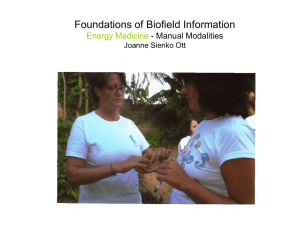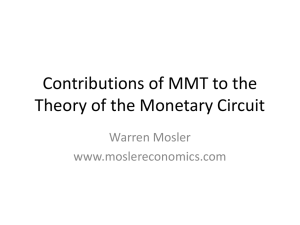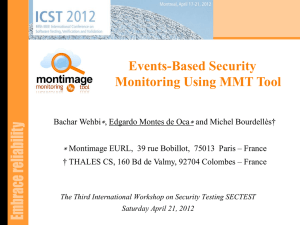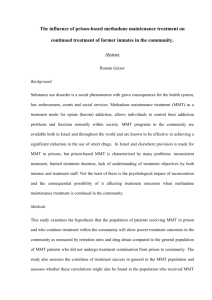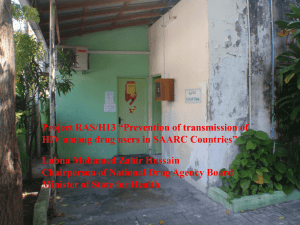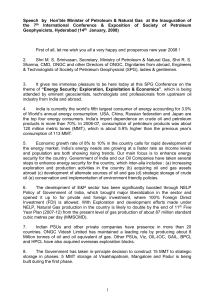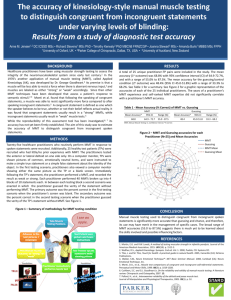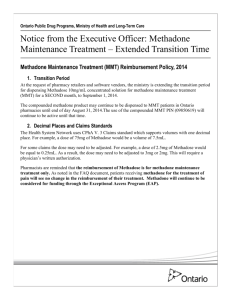3 Requirements
advertisement
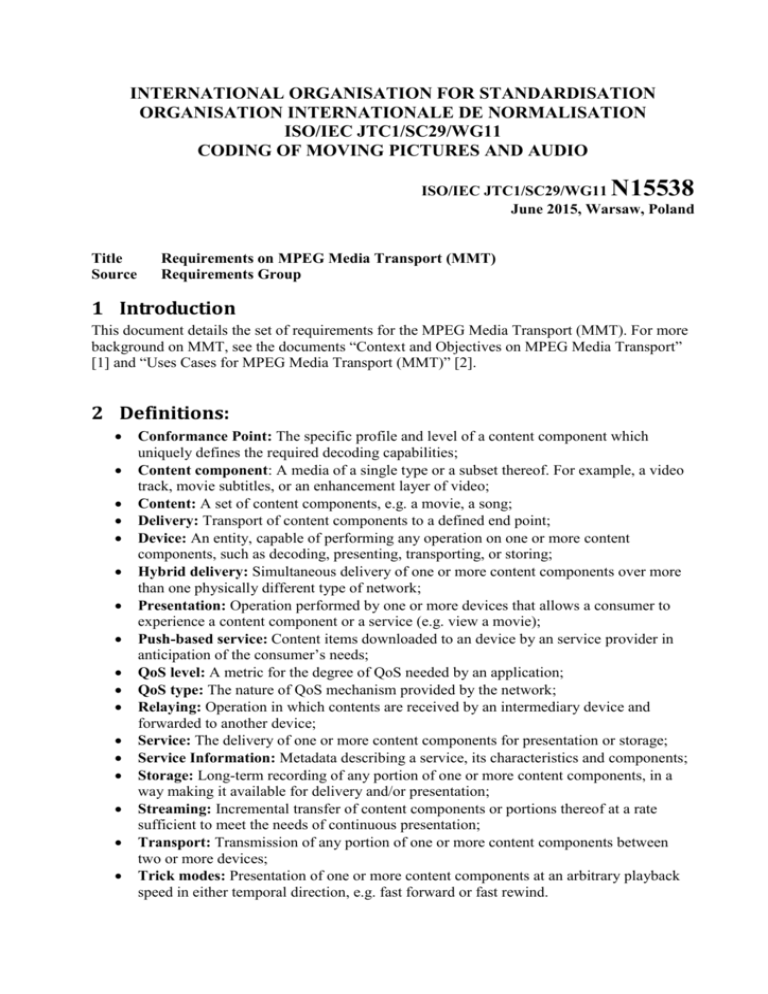
INTERNATIONAL ORGANISATION FOR STANDARDISATION ORGANISATION INTERNATIONALE DE NORMALISATION ISO/IEC JTC1/SC29/WG11 CODING OF MOVING PICTURES AND AUDIO N15538 ISO/IEC JTC1/SC29/WG11 June 2015, Warsaw, Poland Title Source Requirements on MPEG Media Transport (MMT) Requirements Group 1 Introduction This document details the set of requirements for the MPEG Media Transport (MMT). For more background on MMT, see the documents “Context and Objectives on MPEG Media Transport” [1] and “Uses Cases for MPEG Media Transport (MMT)” [2]. 2 Definitions: Conformance Point: The specific profile and level of a content component which uniquely defines the required decoding capabilities; Content component: A media of a single type or a subset thereof. For example, a video track, movie subtitles, or an enhancement layer of video; Content: A set of content components, e.g. a movie, a song; Delivery: Transport of content components to a defined end point; Device: An entity, capable of performing any operation on one or more content components, such as decoding, presenting, transporting, or storing; Hybrid delivery: Simultaneous delivery of one or more content components over more than one physically different type of network; Presentation: Operation performed by one or more devices that allows a consumer to experience a content component or a service (e.g. view a movie); Push-based service: Content items downloaded to an device by an service provider in anticipation of the consumer’s needs; QoS level: A metric for the degree of QoS needed by an application; QoS type: The nature of QoS mechanism provided by the network; Relaying: Operation in which contents are received by an intermediary device and forwarded to another device; Service: The delivery of one or more content components for presentation or storage; Service Information: Metadata describing a service, its characteristics and components; Storage: Long-term recording of any portion of one or more content components, in a way making it available for delivery and/or presentation; Streaming: Incremental transfer of content components or portions thereof at a rate sufficient to meet the needs of continuous presentation; Transport: Transmission of any portion of one or more content components between two or more devices; Trick modes: Presentation of one or more content components at an arbitrary playback speed in either temporal direction, e.g. fast forward or fast rewind. 3 Requirements: Note: The word "support" is defined as "providing means (mechanisms) for something" or "permit or allow something by design". 1. General Requirements a. MMT shall have clear advantages over existing standards. b. MMT shall have low computational resource demands. 2. Content: Aggregation of content and content components: a. MMT shall support the delivery of multiple components. b. MMT shall support the storage of multiple components. c. MMT shall support the delivery of services that use common components. d. MMT shall support storage of content that use common components. e. MMT shall support content component identification with different time granularity. f. MMT should enable convenient conversion between delivery and storage formats to facilitate storage of delivered content and vice versa. g. MMT shall support dynamic configuration (combining, separating, adding or removing) of content components during delivery. h. MMT shall support services that use previously stored content components as well as components that are being delivered. Type of content: i. MMT shall support any type of media content, including current and future MPEG codecs (which may produce very low to very high data rates). j. MMT shall support delivery of non-timed and timed generic external data. k. MMT shall support identification of conformance points of each content component. l. MMT shall support splicing on service level and on a content component level. 3. Delivery: a. MMT shall support streaming of pre-stored content. b. MMT shall support streaming of live content of possibly indefinite length. c. MMT shall support progressive download. d. MMT shall support delivery using existing application-layer (transport) protocols such as RTP and HTTP. e. MMT shall support delivery using existing transport layer protocols such as TCP and UDP. f. MMT shall support push-based services and transport, e.g., over unidirectional or multicast channels. g. MMT shall support low latency delivery. h. MMT shall support the use of different QoS types and levels based on different factors such as feedback. i. j. k. l. m. n. o. MMT shall support resiliency to packet loss (including burst losses). MMT shall support resiliency to packet arrival jitter. MMT shall support resiliency to packet re-ordering. MMT shall support the control of end-to-end delay. MMT shall support random access. MMT shall support trick modes. MMT shall support convenient conversion (to/) from the existing MPEG transport/storage formats. p. q. r. s. MMT shall support relaying of received content. MMT shall support the use of variable packet sizes. MMT shall introduce minimal transport overhead. MMT shall support description of media components for delivery and consumption. t. MMT shall support in-band carriage of service and content information. u. MMT shall enable synchronization of related content streams including when these are presented on different screens and/or transmitted over different networks Example: different camera views, one on a “main” screen and another on a companion screen v. MMT shall support selection of media components for delivery and consumption. w. MMT shall support clock recovery, if needed by the service. x. MMT shall support prioritized delivery of content and content components. y. MMT shall support multipath delivery. z. MMT shall support hybrid delivery. aa. MMT shall support both unidirectional and bidirectional channels. bb. MMT shall support seamless use of heterogeneous network environments. cc. MMT shall support the concurrent use of multiple sources. 4. Decoding and Presentation Support: a. MMT shall support conveying synchronization information of content components based on different parameter such as geographical location and independently whether they are delivered using MMT or externally. b. MMT shall support signaling of codec buffer models. c. MMT shall enable continuous decoding and presentation of content under various network conditions, for example by defining a buffer model. 5. Adaptation: a. MMT shall support the adaptation of content in domains such as temporal, spatial, quality/fidelity, view perspective or alternative contents. b. MMT shall support dynamic adaption during delivery. c. MMT shall support adaptation to a wide range of device capabilities or device resource limitations. d. MMT shall support seamless adaptation to service demands based on QoS/QoE feedback. e. MMT shall support seamless adaptation to underlying network conditions. f. MMT shall support signaling for adaptation among different network elements of a delivery chain. g. MMT shall support seamless switching of content components. 6. Content Protection: a. MMT shall support signaling, delivery and utilization of multiple content protection and rights management tools, if required. b. MMT shall support seamless change between content rights management schemes. 4 References [1] ISO/IEC JTC1/SC29/WG11/N13463, Uses Cases for MPEG Media Transport (MMT), April 2013 [2] ISO/IEC JTC1/SC29/WG11/N11541, Context and Objectives on MPEG Media Transport (MMT), July 2010
